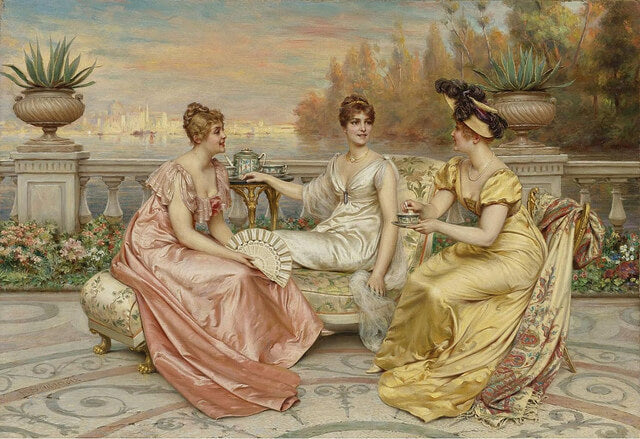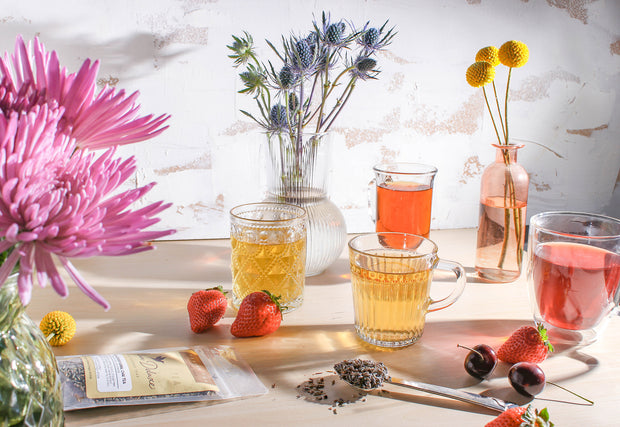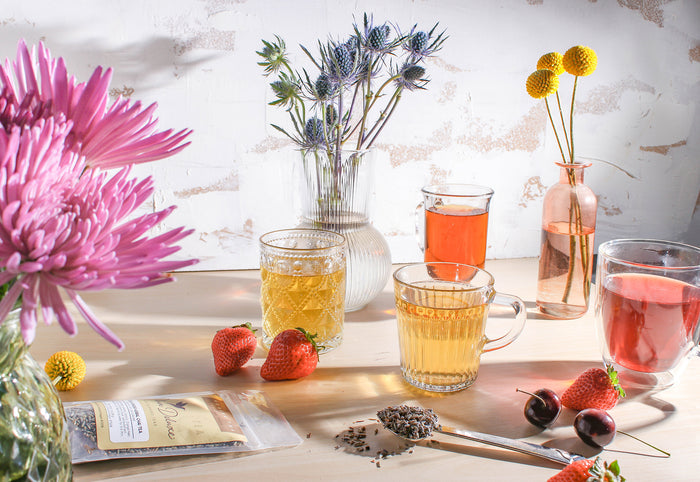
Just as there are hundreds of different tea varietals, there are hundreds of ways to brew and serve a cuppa. Take, for example these five milestones in the 300-plus years tea has been part of the Western social scene.

1662
Opinions vary regarding when and how tea was introduced in Europe, but, while its appearance is indeed important, its popularization is more interesting. After all, that is how western tea practices originated. When King Charles II returned from exile, his Portuguese bride came along toting a full casket of tea. Soon thereafter she began inviting friends to her chambers to enjoy the warm beverage. I doubt she hung a sign on her door proclaiming “meninos não bem-vindos,” -- loosely: no boys allowed -- but tea-time was strictly a girl’s club. Not only did the lucky guests take the first sips of an intoxicating new entertainment, they got to see inside the Queen’s private chambers!

1800s
In 1839, recipes for iced tea claimed a few pages of cookbooks in South Carolina, the first American grower and distributer of tea. Trust Americans, Southerners at that, to take a classic drink and “enhance” it. That’s right, iced tea was originally served as a punch and included a full bottle of claret or Champagne. In 1879, housewives began serving sweetened green tea over ice, but five years later green tea was swapped out for the stronger black tea. Do I wish I’d been invited to sip spiked tea on a wrap-around porch? Bless your little heart, you know I do!

1865
Fanciful, volatile, and somewhat silly -- what else would one expect from a tea hosted by The Mad Hatter? While most girls in Victorian-era England were familiar with tea-time formalities, I doubt they would have been any more prepared than Alice at finding herself participating in a party of such fantastic proportions. Whether you prefer the original play-by-play from Lewis Carroll’s pen, Disney’s portrayals from 1951 and 2010, or one of the hundreds of other interpretations, you may still never know how a raven is like a writing desk.

1929
In keeping with White House tradition, First Lady Lou Hoover invited Jesse L. DePriest, wife of Congressman Oscar Stanton DePriest, to a tea party at the White House. For the first time in American history a black woman attended a White House function in an official capacity. Much care went into planning the event. Like any good hostess, First Lady Hoover focused on making the party a success, starting with which potential guests would make for an enjoyable mix. The second priority was minimizing any negative reaction to such a symbolic move with regard to race relations. As expected, there was a mixed reaction from the public, but members of the White House staff professed admiration for the “perfect propriety” with which Mrs. DePriest and First Lady Hoover composed themselves. I’ll take my tea with cream and a spoonful of breaking down barriers.

1999
It is in the dim, heavenly perfumed classroom of Professor Trelawney’s tower that Harry Potter has his first experiences with tasseography, the art of divining the future from tea leaves. First, Harry determines Ron Weasley will “suffer but be very happy.” Then Ron’s cheerful reading of Harry’s future at the Ministry of Magic and the recipient of an unexpected windfall are interrupted by the professor’s much darker visions of “a deadly enemy,” an attack, danger, and…death! So yeah, that tea party turned a bit grim (oh yes, I did) but I can imagine things much worse. Say, tea with Professor Umbridge?
Tea is an incredibly versatile beverage that works well hot, cold, spiked, or even as a fortune teller. I can’t wait to see what sort of tea history we make in the 21st century.
Photo Credits: Frédéric Soulacroix, Jacob Huysmans, Professor Bop, public domain, FoodBoard, and MochaSwirl.

![Spring Break Tea Variety Pack [6-Pack Variety of Flavors]](http://www.plumdeluxe.com/cdn/shop/files/spring-break-pack.jpg?v=1740682266&width=165)















